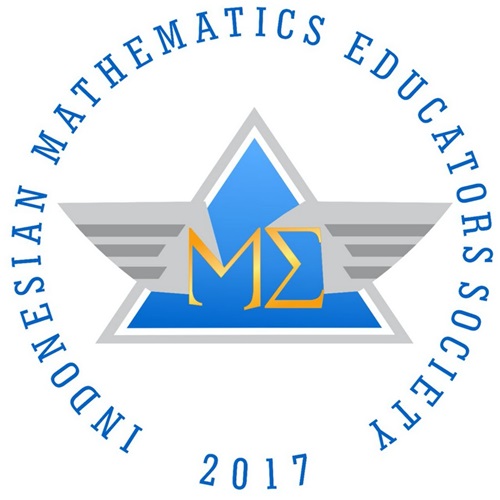High School Mathematics Teachers' Conceptions of Creative Thinking
DOI:
https://doi.org/10.22437/edumatica.v12i03.22667Keywords:
creative thinking, creativity, teachers' conceptionsAbstract
This study aims to describe the high school mathematics teachers' conceptions of creative thinking. The research approach used is descriptive qualitative. The subject in this study was a high school mathematics teacher in Yogyakarta. This study uses the results of an open questionnaire as the main data and interviews as supporting data. The results of the study show that the mathematics teachers' conceptions of creative thinking are limited to ways of thinking/solving a problem by using new steps or ideas so as to find/produce something new/different from usual. Creative mathematics teachers are described as being able to come up with new ideas, being able to make new innovations in learning. The teacher plays an active role in guiding students to be able to think creatively by giving questions or assignments that trigger mathematics in the form of descriptions (open questions) so that students can explore their abilities to trigger their creative thinking. The teacher assesses the ability to think creatively by giving open questions/trigger assignments and then analyzing the steps/results of the work to find new steps/ideas in the process.
Downloads
References
Aljughaiman, A., & Mowrer-Reynolds, E. (2005). Teachers' conceptions of creativity and creative students. Journal of Creative Behavior, 39(1), 17-34.
Beghetto, R. A., & Plucker, J. A. (2006). The Relationship Among Schooling, Learning, and Creativity: “All Roads Lead to Creativity’ or ‘You Can’t Get There from Here”? In J. C. Kaufman, & J. Baer, Creativity and Reason in Cognitive Development (pp. 316-332). Cambridge: Cambridge University Press.
Bryant, S. L. (2014). Queensland Teachers' Conceptions of Creativity: A Phenomenographic Investigation. Brisbane: Queensland University of Technology. Retrieved from https://eprints.qut.edu.au/70237/1/Sandra_Bryant_Thesis.pdf
Cachia, R., & Ferrari, A. (2010). Creativity in Schools: A Survey of Teachers in Europe. Luxembourg: Publications Office of the European Union. Retrieved from https://publications.jrc.ec.europa.eu/repository/handle/JRC59232
Chamberlin, S. A., & Moon, S. M. (2005). Model-eliciting activities as a tool to develop and identify creatively gifted mathematicians. The Journal of Secondary Gifted Education, 17(1), 37-47.
Craft, A. (2003). The limits to creativity in education: dilemmas for the educator. British Journal of Educational Studies, 51(2), 113-127.
Faturohman, I., & Afriansyah, E. A. (2020). Peningkatan kemampuan berpikir kreatif matematis siswa melalui creative problem solving. Mosharafa: Jurnal Pendidikan Matematika, 9(1), 107-118.
Happy, N., & Widjajanti, D. B. (2014). Keefektifan PBL ditinjau dari kemampuan berpikir kritis dan kreatif matematis, serta self-esteem siswa SMP. Jurnal Riset Pendidikan Matematika, 1(1), 48-57.
Hondzel, C. D. (2013). Fostering Creativity: Ontario Teachers' Perceptions, Strategies, and Experiences. London: The University of Western Ontario. Retrieved from https://ir.lib.uwo.ca/cgi/viewcontent.cgi?article=2533&context=etd
Hong, M., & Kang, N. H. (2010). South Korean and the US secondary school science teachers’ conceptions of creativity and teaching for creativity. International Journal of Science and Mathematics Education, 8(5), 821-843.
Leikin, R., Subotnik, R., Pitta-Pantazi, D., Singer, F. M., & Pelczer, I. (2013). Teachers’ views on creativity in mathematics education: an international survey. ZDM - Mathematics Education, 45(2), 309-324.
Lev-Zamir, H., & Leikin, R. (2011). Creative mathematics teaching in the eye of the beholder: focusing on teachers' conceptions. Research in Mathematics Education, 13(1), 17-32.
Lev-Zamir, H., & Leikin, R. (2013). Saying versus doing: teachers’ conceptions of creativity in elementary mathematics teaching. ZDM - Mathematics Education, 45(2), 295-308.
Mahmudi, A. (2010). Mengukur kemampuan berpikir kreatif matematis. Konferensi Nasional Matematika XV (pp. 1-9). Manado: Universitas Negeri Manado.
Meissner, H. (2008). Intuitive-creative-gifted-logical: an analysis for the discussion group DG9 at ICME 11. DG 9: Promoting Creativity for All Students in Mathematics Education, The 11th International Congress on Mathematical Education. Monterrey, Mexico: International Commission on Mathematical Instruction.
Newton, D. P., & Newton, L. D. (2009). Some student teachers’ conceptions of creativity in school science. Research in Science & Technological Education, 27(1), 45-60.
Pangestu, N. S., & Yunianta, T. N. (2019). Proses berpikir kreatif matematis siswa extrovert dan introvert SMP kelas VIII berdasarkan tahapan Wallas. Mosharafa: Jurnal Pendidikan Matematika, 8(2), 215-226.
Pitta-Pantazi, D., Kattou, M., & Christou, C. (2018). Mathematical Creativity: Product, Person, Process and Press. In F. M. Singer, Mathematical Creativity and Mathematical Giftedness (pp. 27-53). Cham: Springer International Publishing AG.
Plucker, J. A., Beghetto, R. A., & Dow, G. T. (2004). Why isn’t creativity more important to educational psychologists? potentials, pitfalls, and future directions in creativity research. Educational Psychologist, 39(2), 83-96.
Renzulli, J. S., Gentry, M., & Reis, S. M. (2007). Enrichment clusters for developing creativity and high-end learning. Gifted and Talented International, 22(1), 39-46.
Runco, M. A. (2007). Creativity Theories and Themes: Research, Development, and Practice. Burlington, MA: Elsevier Academic Press.
Sriraman, B. (2005). Are giftedness and creativity synonyms in mathematics? The Journal of Secondary Gifted Education, 17(1), 20-36.
Sternberg, R. J., & Lubart, T. I. (1998). The Concept of Creativity: Prospects and Paradigms. In R. J. Sternberg, Handbook of Creativity (pp. 3-15). Cambridge: Cambridge University Press.
Treffinger, D. J., Young, G. C., Selby, E. C., & Shepardson, C. (2002). Assessing Creativity: A Guide for Educators. Storrs, CT: The National Research Center on the Gifted and Talented. Retrieved from https://files.eric.ed.gov/fulltext/ED505548.pdf
Downloads
Published
How to Cite
Issue
Section
License
Copyright (c) 2022 Arief Budi Wicaksono, Siti Khabibah, Masriyah Masriyah

This work is licensed under a Creative Commons Attribution-NonCommercial-ShareAlike 4.0 International License.






